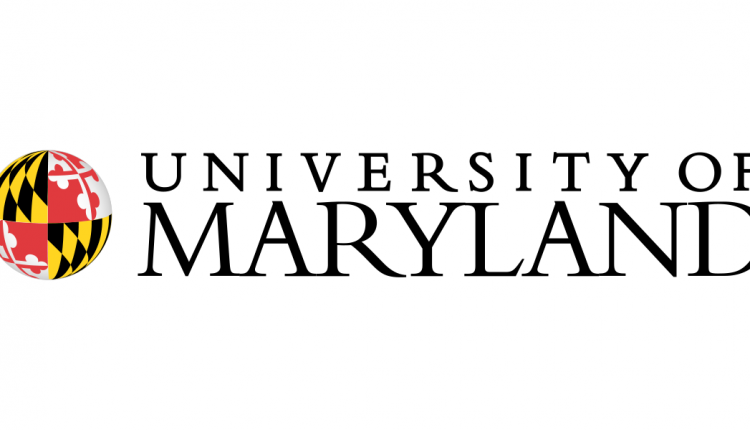University of Maryland: Mapping the Quantum Frontier
It’s hard to envision a time when computers didn’t more or less disappear into beige office landscapes or pile up, obsolete in closets like increasingly ancient geological strata. The technological behemoths that Franz Klein works with, however, still evoke a twinge of dawn-of-the-space-age wonder.
As a high-performance computing engineer in the University of Maryland’s Division of Information Technology, he helps run massive computing clusters linked by kilometers of cable that gobble enough electricity to run hundreds of average houses while crunching exponentially more data than your laptop. Astronomers, geneticists, climatologists and others queue up for solutions only supercomputers like UMD’s soon-to-debut Zaratan, not to mention larger clusters at government laboratories and high-tech firms, can spit out.
Yet with all this digital horsepower at his fingertips, Klein now is venturing in a new direction with his recent concurrent appointment directing the National Quantum Lab at Maryland, aka the Q-Lab. Along with the National Science Foundation (NSF)-funded Quantum Leap Challenge Institute for Robust Quantum Simulation (RQS), it’s one of two recent initiatives centered at UMD to accelerate the nascent field of quantum computing and help map out an unfamiliar new world. As various quantum technologies take off, a new class of computers enabled by the latest advances in physics is expected to revolutionize every aspect of life, just as today’s devices led to the internet, mobile technology and advanced manufacturing.
But this world of possibility has plenty of technological terra incognita, including limitations that echo the 1940s, when the first computers sparked to life, Klein saId.
“There’s a mismatch between the reality of the technology and what quantum computer science and information science want to do with large, ideal systems that don’t exist yet,” he said.
UMD’s aggressive new push, he adds, could help reality catch up.
Hardcore Engineering, ‘Wacky’ Ideas
Klein isn’t the first to note this mismatch, and the initiatives approach it from very different angles: The RQS, a multi-institutional project led by UMD and supported by $25 million from the NSF, takes a basic science tack with computer scientists, physicists, engineers and chemists exploring the universe at the scale of atoms while experimenting with different technologies and systems. It’s all connected by the interim step toward powerful quantum computers known as quantum simulation—using the current hardware to “simulate” and study quantum systems in nature, from the workings of molecules to how light behaves.
The Q-Lab, which is expected to open its doors this fall in the university’s Discovery District with a $20 million investment from UMD, is a partnership with university spinoff IonQ. The lab centers on the company’s campaign to translate discoveries that emerged from the Department of Physics into the first breakthrough quantum computer, establishing real-world viability for the technology. UMD researchers, partners and students, meanwhile, have access to the hardware and research opportunities that result from IonQ’s race with tech giants like IBM and Google.
“No other university in the United States is able to provide students and researchers this level of hands-on contact with commercial-grade quantum computing technology and insights from experts working in this emerging field,” University of Maryland President Darryll J. Pines said last fall in announcing the lab.
Both efforts draw on one of the largest quantum research efforts in the world at UMD. The university boasts eight related centers and institutes, a long-running partnership with the National Institute of Standards and Technology, and hundreds of researchers who delve into all aspects of quantum science and technology, from discovering new superconducting materials to exploring the mathematical and conceptual underpinnings of matter.
The foundations of the RQS and Q-Lab appear very different—“let’s see what we can find” science vs. “let’s reach the goal” engineering—because it’s impossible to predict how technological revolutions are born, said Alicia J. Kollár, a RQS co-investigator and Chesapeake Assistant Professor of Physics. For example, a 1950s experiment at Bell Labs resulted in the discovery of a transistor-manufacturing process that helped make modern computers possible, only after an apparent disaster. “They couldn’t figure it out, and then one day, their apparatus exploded—and then it worked,” she said.
“If you’re truly going to build a digital quantum computer, you can’t do it without hardcore engineering; you also need the wacky ideas and discoveries from doing science,” Kollár said.
Qubit Connection
A wide developmental gulf divides quantum computing from the “classical” computing that runs phones, smart fridges and supercomputers. With tech roots stretching back 80 years to the dawn of transistors, even a standard processor on sale at Best Buy can handle billions of “bits”-zeros and ones that are the basic units of information in standard computing. But quantum computers? You and some friends could count on your fingers how many “qubits,” or quantum bits, they have.
But thanks to non-intuitive quantum effects like “superposition,” which essentially allows a qubit to be both a zero and a one simultaneously, and “entanglement,” which means qubits can be correlated in classically impossible ways, each qubit far surpasses a bit in terms of information-processing potential.
A machine of just a few thousand qubits should outperform the biggest classical supercomputer: cracking modern cryptography, perhaps supercharging artificial intelligence and machine learning, or mastering chemistry at an unprecedented level.
But getting to 1,000 reliable qubits, for now, is as daunting as Everest before Hillary and Tenzing.
Qubits must maintain delicate quantum states for the computer to operate; errors result from vibrations, temperature fluctuations or other environmental variables. The upshot, many believe, is that each functional qubit will need many more backup qubits to correct errors, unless a more reliable qubit technology comes to dominate. So 1,000 “logical” qubits might translate into 10,000, or even 100,000 individual qubits.

